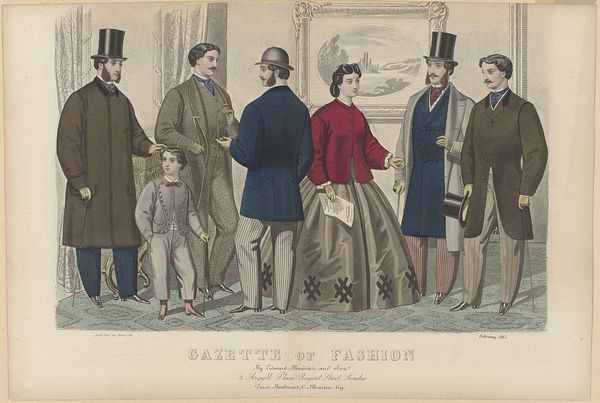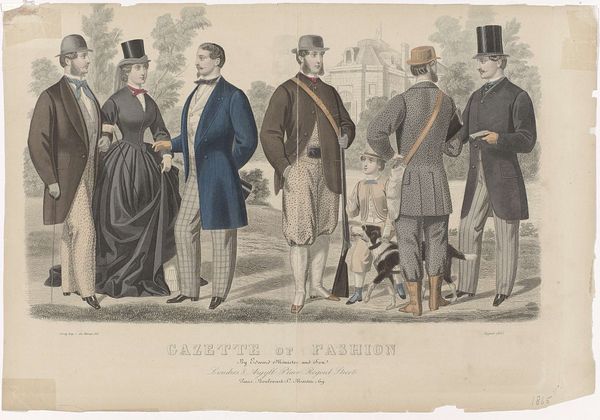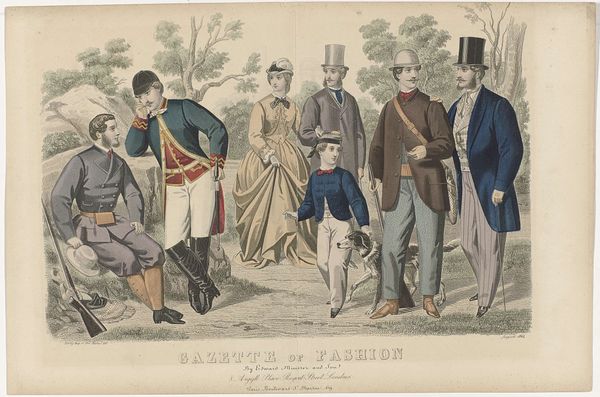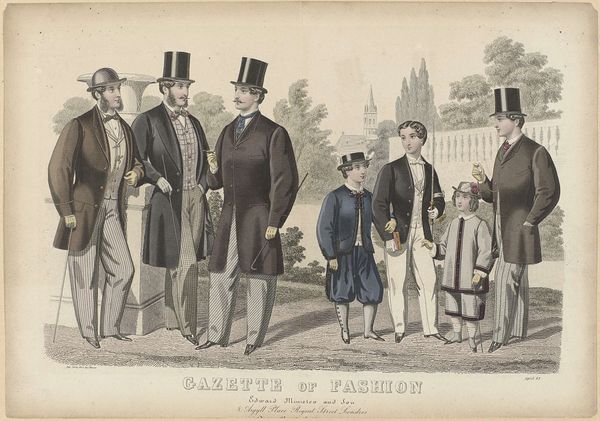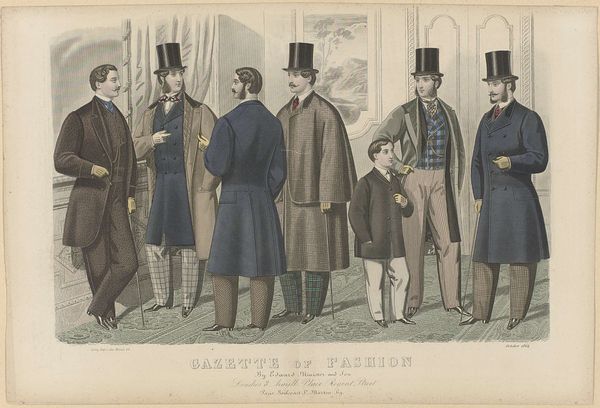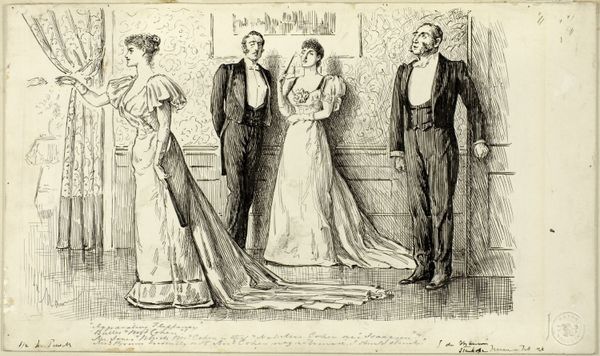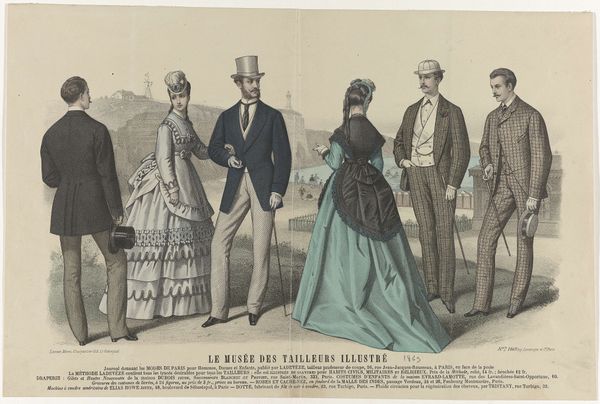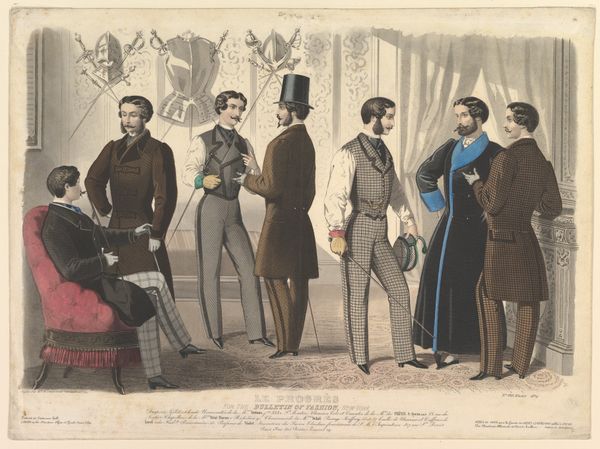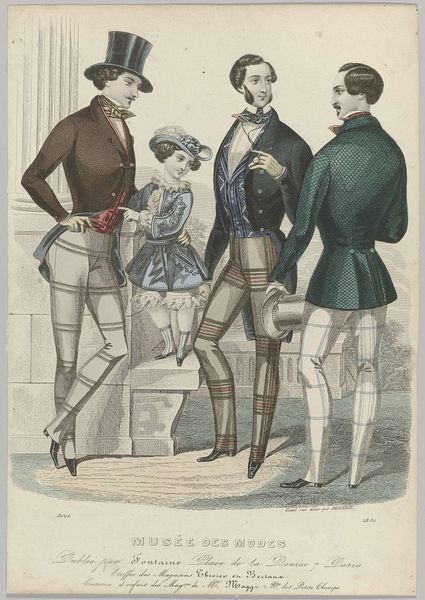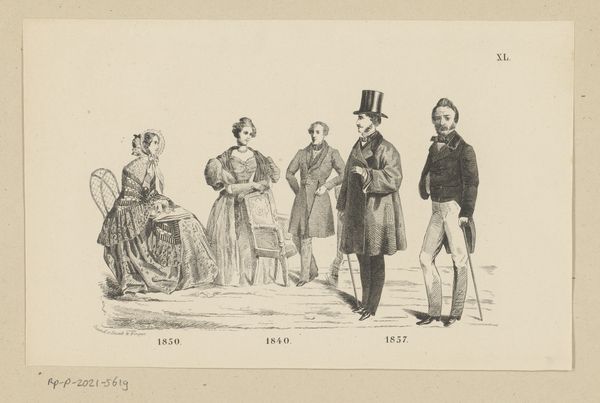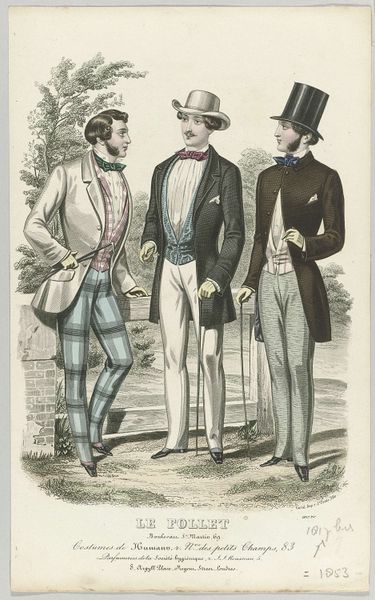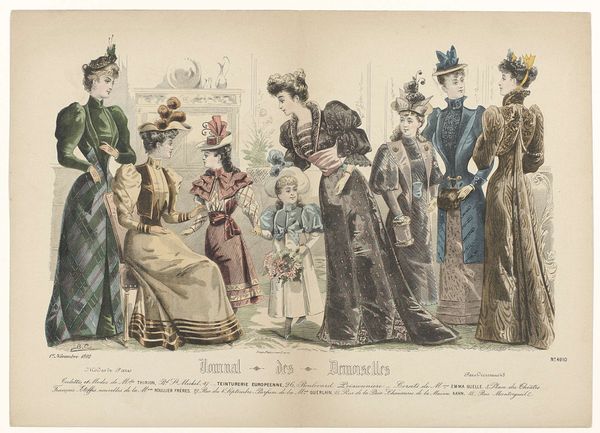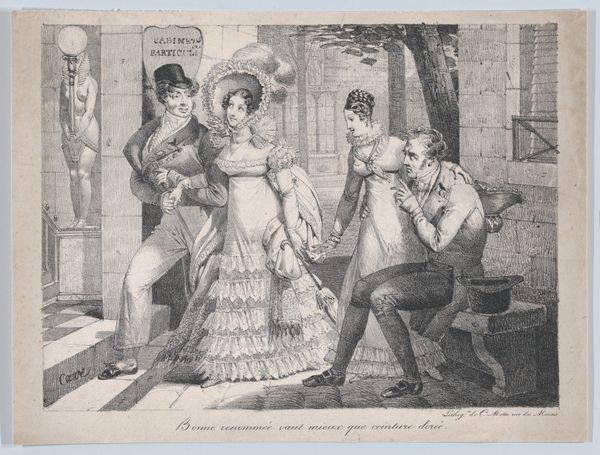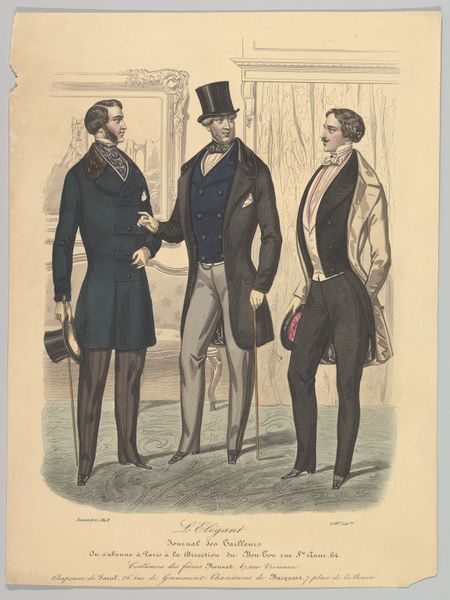
Dimensions: height 260 mm, width 382 mm
Copyright: Rijks Museum: Open Domain
Editor: We’re looking at “Gazette of Fashion, April 1866,” a print from, I believe, an anonymous artist. It’s really striking to see these figures, almost like a lineup of fashion plates. What can you tell me about this kind of imagery? Curator: Well, this "Gazette" is interesting because it exemplifies the increasing democratization of fashion in the mid-19th century. Consider who controlled imagery and taste prior to mass print production. Editor: Elites, definitely. So, this represents a shift? Curator: Exactly! Think about the socio-economic implications. With engravings like this circulating, fashion trends, formerly exclusive to the upper classes, became accessible to a wider audience. Did this change social behavior at all? Editor: I guess it would let people emulate aristocratic styles and potentially challenge class distinctions? Curator: Precisely. Publications like this weren't just about pretty dresses; they were agents of social mobility, disrupting established hierarchies by distributing the *appearance* of status. The act of portraying individuals in specific clothing normalizes, if not also idealizes them. Does anything strike you as conspicuously missing or included in the image? Editor: Now that you mention it, I see no working-class people depicted; even the background figures appear well-dressed and leisurely. Curator: An important observation! The selective portrayal of certain lifestyles reinforces social hierarchies even while ostensibly democratizing fashion. It underscores the power of imagery in shaping public perception. This wasn't just about fashion, it was about crafting an aspirational ideal, even if the aspirational group remained extremely narrow. Editor: That's fascinating! I had just viewed it as a collection of old-fashioned clothes, but I now see the potential influence in normalizing class structures and dictating what someone ought to look like. Thanks so much for helping clarify this! Curator: My pleasure! The political implications of imagery are quite a pervasive part of fashion; paying attention to it offers crucial perspectives into power.
Comments
No comments
Be the first to comment and join the conversation on the ultimate creative platform.
